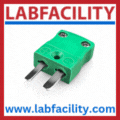
Posted to News on 7th Jul 2016, 17:40
Maximising heat exchange efficiency reduces costs
A heat exchanger is simply a device for transferring heat from one fluid or gas to another. Yet choosing the best suited heat exchanger for a particular application is not that simple and requires the supplier to fully understand your process and products so that the system delivers optimum performance throughout its working life.

With 35 years' experience supplying heat exchangers for heating and cooling to a wide range of industries including food manufacturers to waste water treatment, chemicals, and bioenergy, HRS Heat Exchangers has developed 13 different types of heat exchanger to handle products of all kinds, from the most simple to most complex. In particular HRS is known for its range of corrugated tube heat exchangers which provide higher heat transfer rates than normal smooth tube heat exchangers.
HRS heat exchangers have a strong reputation for heat recovery from their heat exchangers. This makes them well suited for clients with complex operations, for example those which feature both heating and cooling operations in their process. It also makes such systems very efficient: HRS pasteurisation systems with heat recovery are typically 70 per cent more efficient than typical "heat jacket' type units.
A wide range of tube-in-tube and multi-tube models are available, which can be configured for a multitude of processes including food processing, heating, cooling, cooking and pasteurisation; sludge, waste and digestate pasteurisation or evaporation; heat recovery; cooling; condensation; crystallisation; evaporation; thermal hydrolysis and more. Single units can be combined to provide applications for any scale and common benefits include low maintenance requirements, cleaning-in-place, easy servicing, heat recovery and high thermal efficiency.
The three main types of heat exchanger offered by HRS include:
Corrugated tube heat exchangers
Unlike other tubular heat exchangers HRS use corrugated tubes. This breaks up the film layer close to the tube wall and introduces extra turbulence, resulting in higher heat transfer rates than normal smooth tube heat exchangers. In turn this results in many benefits including: heat exchangers which are more compact and shorter than conventional tube-in-tube units; less expensive and more compact units for the same capacity, in some cases up to 40 per cent smaller; less fouling and maintenance; shorter units which have a lower pressure drop saving energy and pumping costs. The higher the flow rate (or the higher the Reynolds number of the fluid), the greater the effect of the corrugated tube on increasing heat transfer.
Corrugated tube heat exchangers can be supplied in various types of geometries for different types of applications and multiple units are frequently interconnected and combined in a frame for larger applications. With nine standard ranges, the company has a product for almost any process.
Scraped surface heat exchangers
In situations where fouling by the material being processed causes the rate of heat transfer to drop, or where viscous fluids have very low heat transfer rates, HRS recommends the use of scraped surface heat exchangers.
These work to remove the fouling layer, which can be caused by the deposition of solids or crystallisation of components, in order to maintain effective heat transfer. When working with viscous fluids the use of scraped surface heat exchangers mixes the fluid vigorously in the tube, increasing the heat transfer rate and allowing the use of smaller units. This can also help with processes such as the cooking of viscous foods which can be cooked faster due to the improved heat transfer rates.
Like corrugated tube heat exchangers, scraped surface units can be combined for larger applications. HRS offers two ranges of scraped surface heat exchanger, which are particular suitability for large applications such as environmental waste, sensitive food products and highly viscous fluids.
Plate heat exchangers
Plate heat exchangers are suitable for applications where the fluids have relatively low viscosity with no particles. Also they are a good choice where the product outlet temperature is close to the service inlet temperature. Plate heat exchangers consist of thin, corrugated plates. The two materials for heat exchange are passed between the gaps of adjacent plates through which the heat is transferred.
HRS plate heat exchangers use a number of herringbone patterned pressed heat transfer plates. These are assembled in an inverse formation to create two sets of parallel channels, one for each liquid. Since the herringbone patterns point in opposite directions, a large number of points of support are achieved creating a lattice in each channel. This provides a high level of turbulence, which in turn leads to an elevated rate of heat transfer. All HRS's plate heat exchangers are calculated to obtain the correct thermal length for the heat transfer duty required, within specific parameters.
Matt Hale, HRS International Sales Manager explains: "The exact requirements of a heat exchanger vary considerably according to its situation, but using corrugated tubes in our double tube and multi-tube heat exchangers provides users with a number of common benefits over other systems.
"Increasing the efficiency of the heat transfer means that less area is required to achieve the same result, so heat exchangers can be shorter and therefore cheaper. Less energy is required for pumping which adds to the overall savings and reusing captured heat enables businesses to save energy elsewhere.
"Over the last year our engineers have installed efficient heat exchange solutions in a number of challenging environments and for many different substances, including dairy curd products, sauces, waste water and the digestate from biogas plants. From heating dairy products and cooling pizza sauce to pasteurising digestate, we have a proven solution in operation somewhere."
For more information about heat exchangers please visit www.hrs-heatexchangers.com.




